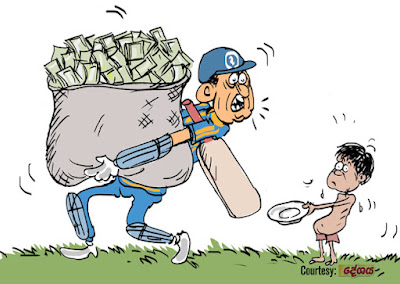Oh, what a tangled web we weave
When first we practice to deceive!
Walter Scott
Last September, the Department of Education announced
three-year default rates for the most recent cohort of student-loan borrowers. According to DOE, three-year default rates went down dramatically over a two-year period. The overall student-loan default rate for the FY 2012 cohort of borrowers was 11.8 percent, significantly lower than the FY 2010 cohort default rate, which was 14.7 percent.
Indeed, the for-profit sector saw a spectacular drop in three-year student-loan default rates--from 21.8 percent for the FY 2010 cohort down to 15.8 percent--a 25 percent drop. Amazing!
But of course DOE's three-year default rates are meaningless, particularly for the for-profit schools. The for-profits have kept their three-year student-loan default rates down by aggressively encouraging their former students to obtain economic-hardship deferments, which keep borrowers off the default roles even though they are not making loan payments.
When we look at the
5-year default rate across all sectors, the default rate is twice as high as the three-year rate. Twenty-eight percent of student borrowers defaulted on their loans within five years of beginning repayment, compared to DOE's 11.8 percent three-year rate.
In other words, more than one out of four postsecondary students default on their student loans within five years.
In fact, the student-loan default rate and nonpayment rate for the for-profit sector are truly alarming. Forty-seven percent of for-profit students default on their loans within five years.
Although the for-profit sector has the highest default rates, many public colleges also have shocking numbers.
Kevin Carey of the
New York Times examined the percentage of students who had paid nothing on the principal of their loans after five years and discovered that the nonpayment rate at several public universities is 20 percent or more: University of Houston, University of Cincinnati, and the University of Louisville among them. At the University of Memphis, Carey reported, 35 percent of former students in a recent cohort had not paid back a dime on their loans five years after entering repayment.
Historically black colleges and universities (HBCUs) have very high student-loan nonrepayment rates. "Of the 25 private colleges with the worst nonrepayment rates, 22 are historically black," Carey wrote. Lane College, a HBCU located in Tennessee, had a five-year student nonrepayment rate of 78.2 percent.
No one who contemplates these numbers can reach any other conclusion other than this: the federal student-loan program is a catastrophe. And, although millions of people have improved their lives by borrowing money to obtain postsecondary education, millions more have been ruined.
Who has been hurt the most by the federal student loan program?
- Students who attended for-profit institutions, where almost half of former students default on their student loans;
- Students who attended HBCUS, which have very high student-loan default rates;
- People who borrowed money to get law degrees or MBA degrees from second- and third-tier institutions;
- People who obtained liberal arts degrees from high-priced private institutions and who acquired no skills that will enable them to get a decent job;
- People who started postsecondary programs and didn't finish them.
The media has reported widely that Americans are carrying $1.3 trillion in outstanding student-loan debt. But this underestimates the reality. This number does not include accumulated interest, loans from private banks, and credit-card debt that students run up while they are in college. Accumulated indebtedness associated with postsecondary education is at least $1.5 trillion.
That's $1.5 trillion dollars in debt carried by just16 percent of the American adult population--the 16 percent least able to bear the burden. And because the consequences of default are so draconian, this significant percentage of Americans is greatly suffering.
And what is the higher education community's solution to this calamity? Long-term income-based repayment plans that will keep borrowers indebted for the majority of their working lives!
If the federal government had devised a plan to intentionally destroy higher education, shrink the middle class and cripple our economy, it could not have invented a better plan than this.
References
Kevin Carey. Student Debt Is Worse Than You Think.
New York Times, October 7, 2015. Accessible at: http://www.nytimes.com/2015/10/08/upshot/student-debt-is-worse-than-you-think.html?_r=1
Adam Looney & Constantine Yannelis.
A crisis in student loans? How changes in the
characteristics of borrowers and in the institutions they attended contributed to rising
loan defaults. Brookings Institution, September 15, 2015. Accessible at: http://www.brookings.edu/~/media/projects/bpea/fall-2015_embargoed/conferencedraft_looneyyannelis_studentloandefaults.pdf






